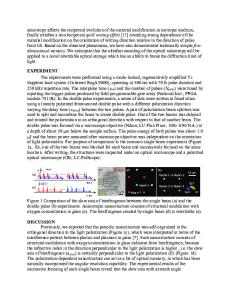Anisotropy of point defect diffusion in alpha-zirconium
- PDF / 185,444 Bytes
- 6 Pages / 612 x 792 pts (letter) Page_size
- 30 Downloads / 365 Views
NTRODUCTION
DIFFUSION and mass transport in anisotropic, hexagonal close-packed (hcp) metals has been widely studied over the last two decades. The interest in mass transport and defect properties in materials, such as Ti, Zr, and Hf, is due to their wide commercial applications in aircraft and the nuclear industry. Despite numerous experimental and theoretical studies (e.g., References 1 through 5), the atomic mechanisms of mass transport in these metals are not yet well understood. Atomic-scale computer modeling has been applied to studies of point defect properties in hcp metals,[6–12] and in general, it was concluded that in metals with c/a lattice-parameter ratios smaller than ideal (1.633), the migration barrier for both vacancies and self-interstitial atoms (SIAs) is lower for basal-plane motion than for offbasal-plane migration. Attempts were made to simulate SIA diffusion,[13–18] and analysis of SIA jump directions, jump frequency, and diffusivity have shown a significant curvature of the corresponding Arrhenius plots, and the possible role of a low-temperature one-dimensional (1-D) mechanism of SIA motion was recognized. However, the details of mass transport via different mechanisms and the diffusion anisotropy ratio are still not clear. This is mainly because the correspondence between defect motion mechanisms and atomic mass transport and between defect static properties and dynamic behavior are rather complicated in hcp crystals, especially with a nonideal c/a ratio. Understanding of this Y.N. OSETSKY, University Research Fellow, and D.J. BACON, Professor, are with the Materials Science and Engineering, Department of Engineering, The University of Liverpool, Liverpool L69 3GH, United Kingdom. N. de DIEGO, Senior Lecturer, is with the Department of Physics of Materials, Faculty of Physical Sciences, Complutense University, 28040 Madrid, Spain. This article is based on a presentation made in the symposium entitled “Defect Properties and Mechanical Behavior of HCP Metals and Alloys” at the TMS Annual Meeting, February 11–15, 2001, in New Orleans, Louisiana, under the auspices of the following ASM committees: Materials Science Critical Technology Sector, Structural Materials Division, Electronic, Magnetic & Photonic Materials Division, Chemistry & Physics of Materials Committee, Joint Nuclear Materials Committee, and Titanium Committee. METALLURGICAL AND MATERIALS TRANSACTIONS A
requires information on correlations in atomic motion via different mechanisms to be known. Although this is not a trivial problem, an atomic-scale technique, such as molecular dynamics (MD), can be used to solve it in principle (e.g., review Reference 19). In this article, we present some results of a comprehensive atomistic study of mass transport in pure hcp metals. The main problem considered is mass transport via the vacancy and SIA, and we have paid much attention to the statistical accuracy of the results, which is an important issue for any MD study of defect diffusion. The simulation of vacancy diffusion is very central p
Data Loading...






